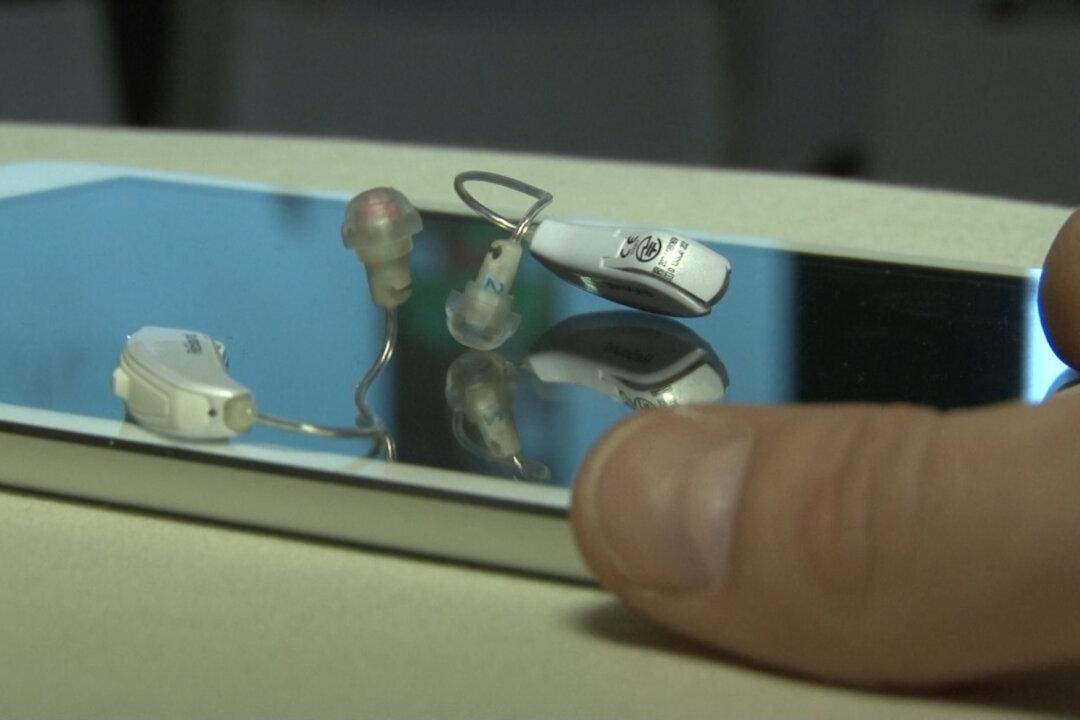NEW YORK—Denmark-based GN ReSound today announced what it calls “the world’s smartest hearing aid.” The high tech hearing aid, ReSound LiNX, is the first made for iPhone, and can also be used with an iPad and iPod touch, according to the company’s website.
The Bluetooth headset fits in both ears and uses SmartRangeTM, the industry’s fastest chip platform.
By downloading the iTunes app “ReSound Control” the user can adjust the volume, environment settings, microphone direction, and the amount of treble, bass and noise each hearing aid receives. The device can save these settings for up to 15 locations. Users can decide if they want to switch on those saved settings when they re-enter the area.
Geotagging can locate the hearing aid if it gets lost, whether miles away or just behind a couch cushion.
Hearing Loss Stigma Lessened
Just as GN ReSound made the hearing aid adjust to different environments, it worked just as hard to fit it seamlessly to the ear. The tiny earpiece is so small that it is almost invisible to a bystander. The only thing that gives it away is the battery pack behind the ear and a clear, practically invisible, tube that connects them.
This, explained GN ReSound audiologist Laurel Christensen, is important in shedding the stigma around wearing a hearing aid. Hopefully this seamless quality diminishes one of the barriers people with hearing loss face in getting treatment.
“What you have to know about hearing loss is the quality of life decrement that happens if you don’t do anything about hearing loss,” said Christensen. “They [the hearing impaired] become socially isolated, they become very lonely.”
This was the case for Dick Loizeaux, one of the first people in the U.S. to try the ReSound LiNX.
“I put off getting a hearing aid a lot longer than I should have. My dad wore a hearing aid and I didn’t want that big hunk of plastic in my ear that just screamed ‘old person!’”
The creators point out that since Apple products have become ubiquitous, fiddling with the settings will not arouse suspicion, and since there is no intermediary device it does not brand the person with a “scarlet letter” of being hearing impaired.
Sound Quality
ReSound boasts “Surround Sound” technology that sets its product apart from the competition. “We’re happy to say that an independent laboratory has actually confirmed that we have the best sound quality on the market today,” said Christensen.
Settings on the device can also be adjusted manually by tapping the back of the battery, so “untechy” users can have better sound quality without complicated technology to deal with. Christensen says the ReSound LiNX delivers. The devices are connected through 2.4 GHz Bluetooth connection, which the company estimates is strong enough to address 90% of all hearing losses.
Cost Reviewed
Audiologist Kenneth Smith, who also uses the ReSound LiNX himself, estimates that, depending on the location, one hearing aid can cost $3,000-$4,000. While for him it is worth it, he says, it is not for everyone needing a hearing aid.
“If you’ve got somebody who is basically sedentary and not doing much, they don’t need the high-end technology,” said Smith.
While user reviews are not readily available in English, comments on Appleinsider.com focus largely on the device’s price.
“To many, paying $3000 for a hearing aid sounds outrageous. After all, isn’t it just a tiny sound amplifier?” writes user “Inkling”.
One user recommended buying a noise-canceling Bluetooth headset with a good microphone instead, that costs about $100.
Another user questioned how “seamless” the device really is. After all, an audiologist still has to program it, and then the settings will need to be adjusted for each new environment that is not saved.





